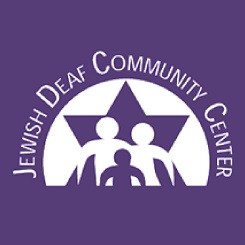Twice, a young Frank Hochman was advised by school counselors to forget his dreams about being a physician and look for another vocation. The first misguided suggestion was that he attend the New York High School of Printing because “he spells well.” Four years later, another advisor recommended his enrolling at an engineering school because he was good at math and science.
Both times Hochman ignored the advice, refused to deviate from his life’s goal, and kept on the course that he had mapped out for himself. In the end Hochman reached his goal. In 1976 he became the “first born-Deaf American to complete medical training, earn a degree, and become a physician.”
Frank Peter Hochman was born on December 26, 1935 in New York City. From birth he was congenitally and severely deaf. For the first three years of his life, his parents traveled from doctor to doctor, from clinic to clinic, and from hospital to hospital trying unsuccessfully to find a “cure” or “treatment” for his condition.
Finally admitting defeat and accepting their son’s deafness as permanent, they enrolled him at age three in the National School for Speech Disorders where he spent the next four years learning how to speak. At age five, Hochman entered P.S. 47 in New York City. With their strict oral program, his persistent use of sign language caused many run-ins with school authorities. In 1949, against the advice of his school counselor, Hochman took Stuyvesant High School’s entrance examination and passed. According to Hochman, this institution is for “academically accelerated boys and possibly the best high school in the country.”
At Stuyvesant, with a lot of hard work, Hochman received an education that “well prepared (him) for everything and anything that followed.” At graduation time, Hochman again went his own way and enrolled at City College of New York in a premedical program. He studied biology, chemistry, and physics. In 1958 he was awarded a B.S. degree in Biology. Then he hit a snag in his road to a medical degree.
Hochman was unable to get a single medical school interview. Because he was deaf, none would consider him for acceptance. He decided to go into medical research.
From 1966-1969 he worked at the City of New York Health Department’s Food and Drugs Laboratory. Hochman advanced to the post of Dairy Division Supervisor. His next step was to be Supervisor of the Narcotics Detection Unit. His promotion was temporarily suspended, however, when the City rejected Hochman because he was deaf. After he threatened legal action, the City backed down.
Leaving New York City, Hochman spent the next three years at a number of hospitals and clinics as medical technologist and research biologist; but he never gave up his dream. In 1971 he took the Medical College Admissions Test (M.C.A.Ts) and registered some very high scores. His performance was even more impressive considering that it had been 18 years since he graduated from college. This time Hochman received “several acceptances to medical schools.”
The following year Hochman entered Rutgers Medical School/College of Medicine and Dentistry at Piscataway, New Jersey. He was 37 years old and probably “the oldest medical student in America.” He completed his coursework there in 1974 and his M.D. in 1976. After graduation, Hochman traveled to California to serve a three-year residency at hospitals in San Francisco and San Jose. He officially began his medical practice in the same region. The San Jose area has a large deaf community, attracted by the California School for the Deaf (CSDF) in Fremont. In addition to his private practice, Hochman was physician at CSDF from 1979-1992.
Dr. Hochman currently sees about 150 patients a week, 90 per cent of them hearing. He uses a very powerful hearing aid, communicates with signing and speechreading, and uses light flashers and vibrating beeper to notify him of TTY calls. His stethescope is specially amplified and is attached to an oscilloscope which displays heartbeats.
Hochman has spent 24 years specializing in family practice, pediatrics, cardiovascular and respiratory systems, hypercholesterolemia, strep, diabetes, and hypothyroidism. He is noted for his close attention to what patients tell him. This alertness helps him pick up on clues that hearing doctors might conceivably miss. In this sense,
Hochman’s deafness is a plus. Another skill that sets Hochman apart from hearing doctors is his handwriting! It is legible, running counter to the old saying about doctors’ unreadable “scribbles” on prescriptions.
Dr. Hochman is a popular speaker throughout the country, lecturing and taking part in workshops. He has visited Gallaudet University many times, encouraging its students to study medicine. His message is that “the deaf can succeed with hard work, good grades, determination, and a measure of luck.” Another bit of advice that Hochman frequently offers is: “Beware of the ‘Can’t Cant’s’… experts in deafness who will always tell you things you can’t do. Pay no attention to them. They ‘can’t’ help it!”
Hochman founded the Society of Hearing Impaired Physicians (SHIP) which provides support for aspiring Deaf doctors and advocacy for Deaf patients. Through the SHIP, he spends time with hearing doctors, giving them tips on dealing with deaf patients. Hochman often has deaf and hearing medical students training in his office. An effective weapon used by Dr. Hochman as he battles ignorance about deaf people is his sense of humor. He is famous for his entertaining anecdotes and with his curly hair, he resembles comic actor Gene Wilder. Dr. Hochman has become “a legend among the deaf.” There are 35 deaf doctors today who owe much to his sacrifices and groundbreaking efforts.




